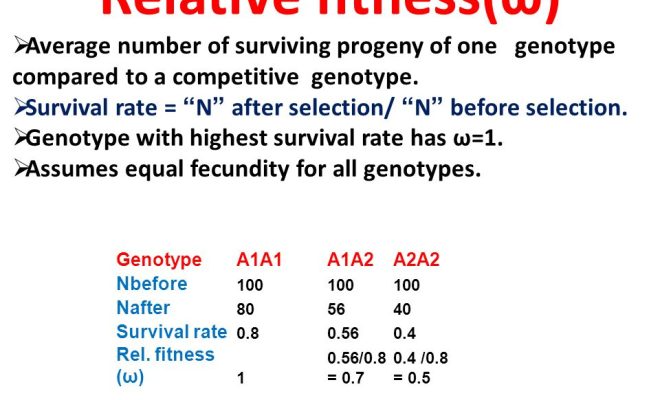How to calculate relative fitness

Relative fitness is a fundamental concept in the field of evolutionary biology, as it helps to determine an organism’s success and survival chances in the context of its environment. The calculation of relative fitness plays a crucial role in understanding how natural selection works and how populations evolve over time. In this article, we will explore the concept of relative fitness in detail and provide a step-by-step guide on how you can easily calculate it.
Understanding Relative Fitness
In biological terms, fitness refers to the ability of an organism to survive, reproduce, and pass on its genes to the next generation. Relative fitness, on the other hand, compares the success rates of individuals within a population. By analyzing this metric, scientists can make predictions about which traits or genetic variations will become more prevalent over time – this is known as adaptive evolution.
Calculating Relative Fitness
To calculate relative fitness (w), follow these steps:
1. Determine the Absolute Fitness (Fi)
The starting point for calculating relative fitness is finding out how many offspring each individual contributes to the next generation (Fi).
This number can be obtained through observation or inferred from available data.
2. Identify the Highest Value of Fi
Once you’ve determined the absolute fitness for each individual in your sample population, identify the highest value among them. This value will be used as a reference point for calculating relative fitness.
3. Calculate w for Each Individual
Now that you have both Fi and the highest value of Fi at hand, divide each individual’s absolute fitness by the highest value. The resulting quotient will be their respective relative fitness (w):
w = Fi / Highest Fi Value
4. Interpret Your Results
Relative fitness values range from 0 to 1. A value close to 1 indicates high fitness, whereas values closer to 0 indicate lower levels of fitness. These values help you understand which individuals and traits are advantaged or disadvantaged under the current environmental conditions, ultimately giving you a better understanding of the population’s potential for adaptive evolution.
Conclusion
In conclusion, understanding and calculating relative fitness plays an essential role in studying evolutionary biology. By following the steps outlined above, you can accurately estimate the relative fitness of individuals and derive meaningful insights into how populations evolve over time. Remember that calculating relative fitness is only one part of the equation, as environmental factors, genetic mutation, and migration also play significant roles in shaping populations’ evolutionary paths.






